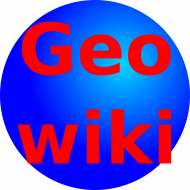Geowiki is a web based application for creating informative maps. You can use it as a standalone desktop application (Windows, Mac, Linux) or as web application. An app inside of Nextcloud (or Owncloud) is planned as well.
The ecosystem of Geowiki has been developed for OpenStreetBrowser – an application which offers many thematic overlays based on OpenStreetMap data.
It’s based on LeafletJS, several LeafletJS plugins and other JavaScript goodness. The desktop application uses electron. It is inspired by Umap.
Each Geowiki-Map combines geographic data (either from OpenStreetMap or own sources) and a style sheet.
Geowiki is still very young. You are welcome to report bugs and ideas as well as contribute improvements on Github. You can try out the demo (use the bottom buttons on the left to load/save files).
Geowiki consists of several modules:
- overpass-frontend: The database module, which loads data either from an Overpass API server or an OSM file.
- leaflet-geowiki: Code for viewing geowiki maps as layer on a LeafletJS map.
- geowiki-desktop: Desktop application for viewing/editing geowiki maps.
- geowiki-viewer: A web application for showing geowiki maps.
- geowiki-spec: Specification of the geowiki style sheet format (which is YAML with TwigJS functions).
- LeafletJS: A JavaScript library for interactive maps in web pages.
- geowiki-mapnik: An application to convert a stylesheet to Mapnik on a PostgreSQL database (imported via osm2pgsql). Requires plv8.
In the background, more modules are at work:
- overpass-layer: Interactive layers from OpenStreetMap data on a LeafletJS map (leaflet-geowiki just adds powerful functions).
- openstreetmap-tag-translations: The translations of the OpenStreetMap tags in many languages. You can add translations using Weblate.
